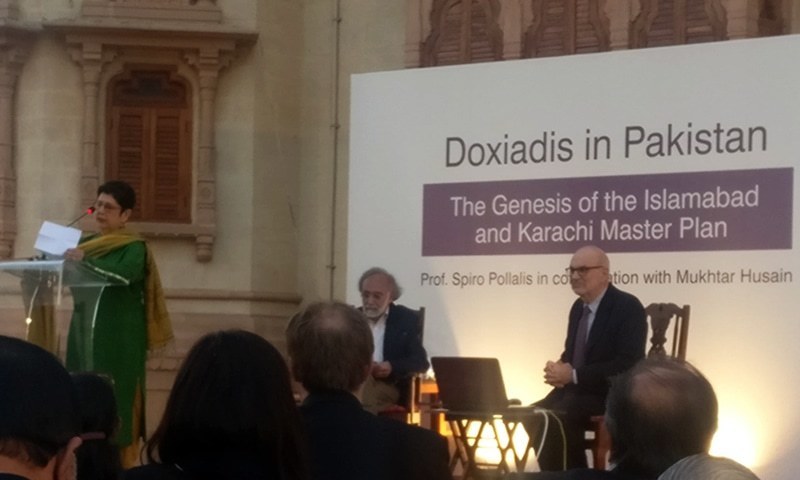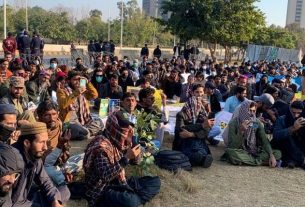Although individual family units have become preferable in Pakistan in recent years, the solution to accommodate its burgeoning urban population lies in multi-family housing.
This was stated by Spiro Pollalis, Professor of design, technology and management at the Harvard Design School who was conversing with architect Mukhtar Husain on Tuesday at an event titled ‘Doxiadis in Pakistan — The genesis of Islamabad and the Karachi Master Plan’. The event was held to discuss the legacy of Greek architect Constantinos Apostolou Doxiadis, who is best known in Pakistan for being the lead architect of Islamabad.
Prof Pollalis, who is also the chief planner of the DHA City Karachi housing project, said he had observed a growing trend among Pakistanis to want to live in single-family houses, but this kind of a model is not sustainable from an urban planning perspective.
“Not only is there no land [to build so many individual houses], but if we built like this, it generates a lot of traffic and mass transportation is not effective,” he told the audience at Karachi’s Mohatta Palace Museum. He added that in order for mass transportation to work, a country needs to have compact cities, and cited the example of New York City in this regard.
According to the expert, it is important for urban planners to keep proximity in mind when planning cities. “We need to be near our work and our schools,” he stressed.
The scholar informed the audience that Doxiadis had based his city development philosophy on five elements – shells (all buildings and structures), nature, human beings, society (people’s interaction with trends, group attitude and social customs) and network.
He said Doxiadis’s Ekistics design and science comprised principles extracted from economics, sociology, technical disciplines, political science and administration, and cultural disciplines and the architect saw cities as living organisms.
‘City of the future’
While discussing the Islamabad master plan, Prof Pollalis said Doxiadis had envisioned Islamabad as a “city of the future”.
He acknowledged that the various sectors of the capital had not developed properly as envisaged by Doxiadis, and Husain pointed out that the population density of many of Islamabad’s sectors is three times that was originally intended.
Prof Pollalis remarked that the problem was not the high population density itself, which he said was now desirable to accommodate the large urban populations, but that the original Islamabad master plan was drafted for a low density of people.
In order to shift from low-density infrastructure to that meant for a high density, “it is not enough to just build in between”, the urban planning expert said. He added that the capital administration needed to adapt to the modern needs of the city while maintaining the spirit of the original design.
But despite the flaws, Pollalis maintained, the Islamabad master plan was implemented quite well by the capital authorities.
“Islamabad is by far the best example of the implementation of what [Doxiadis] designed,” he said.



